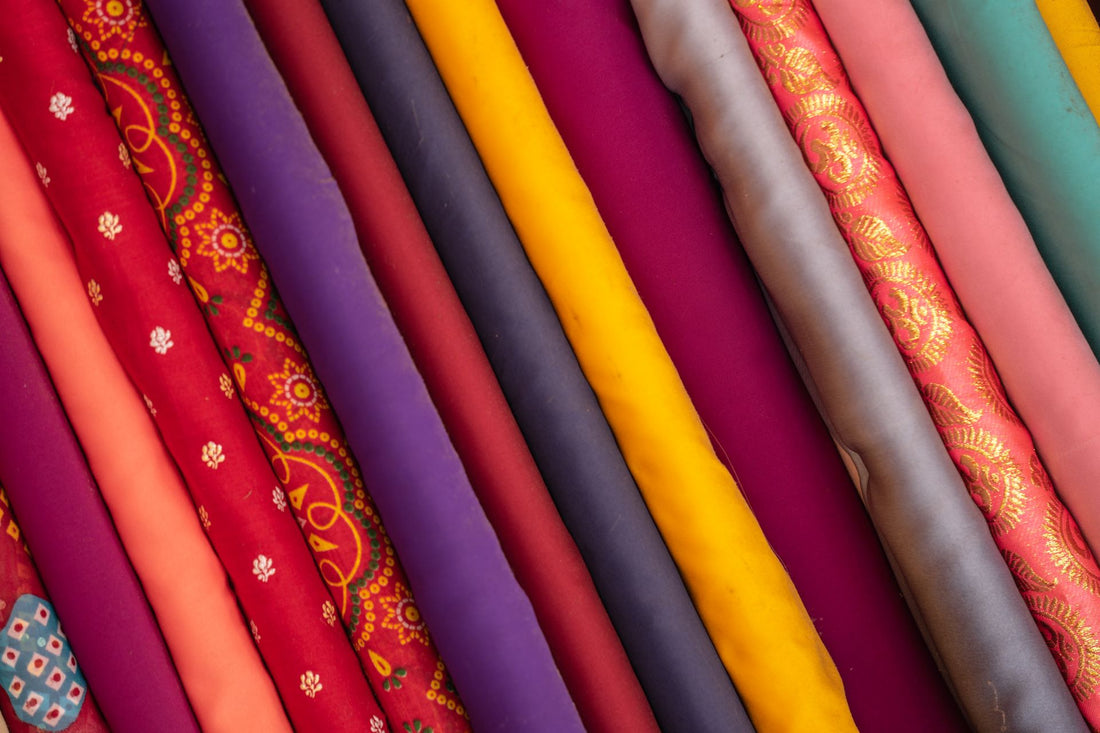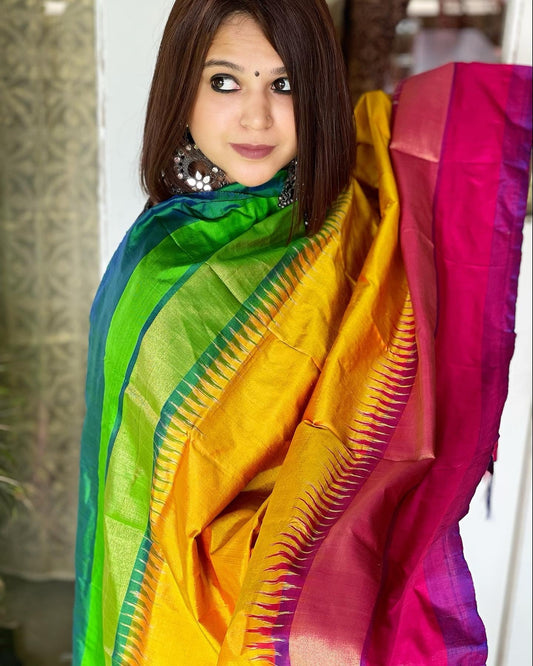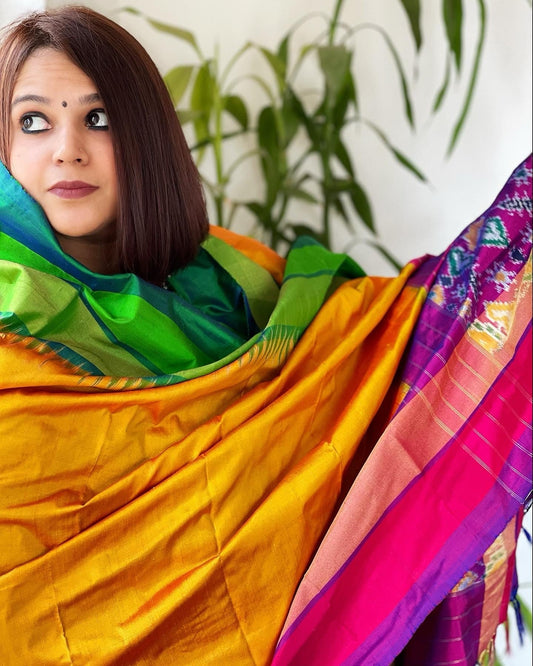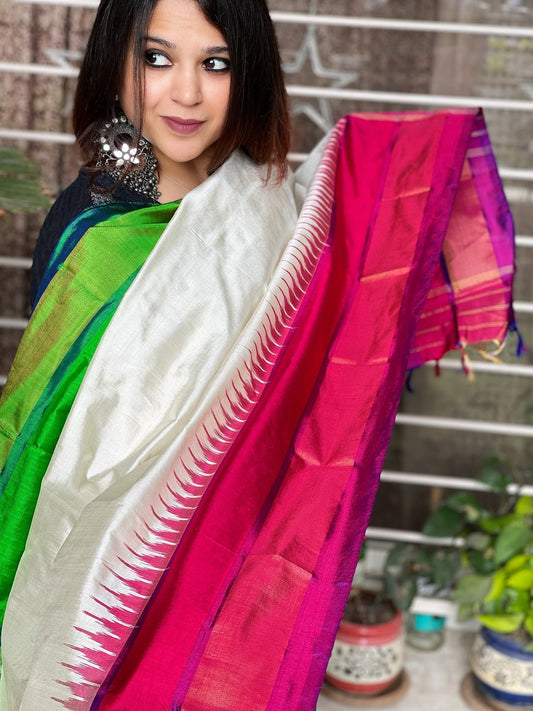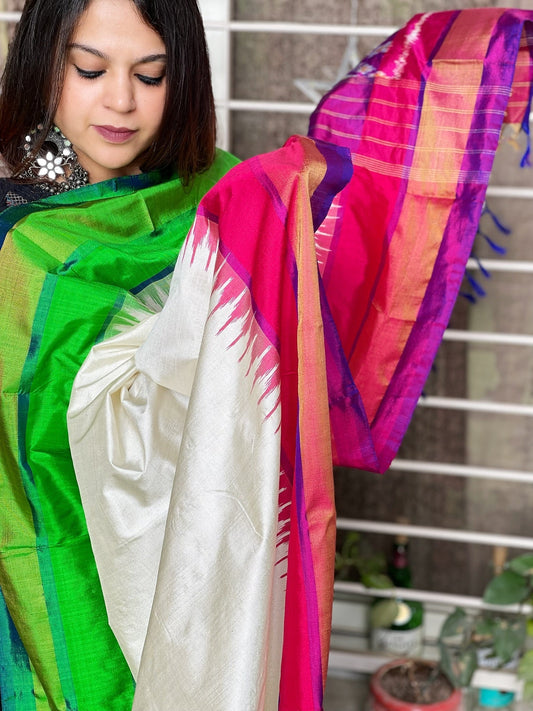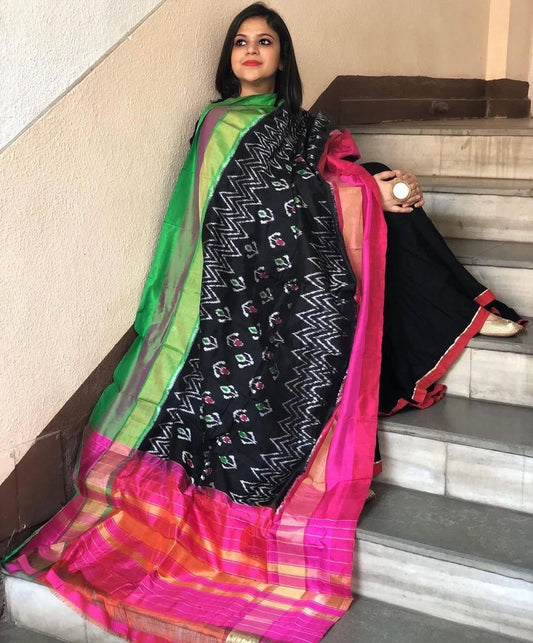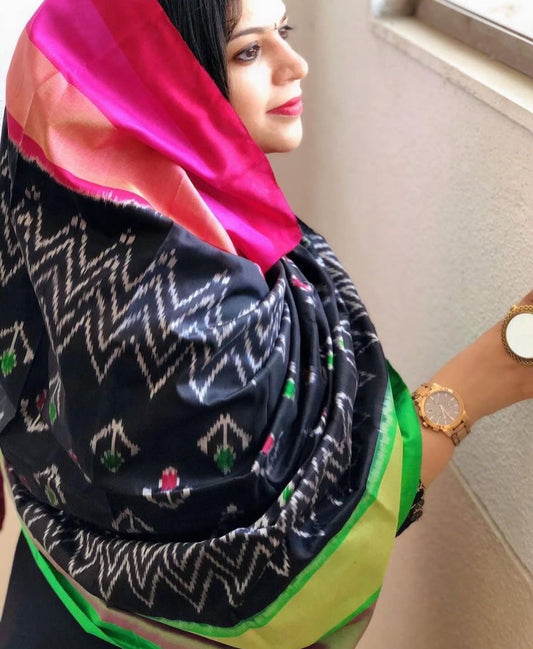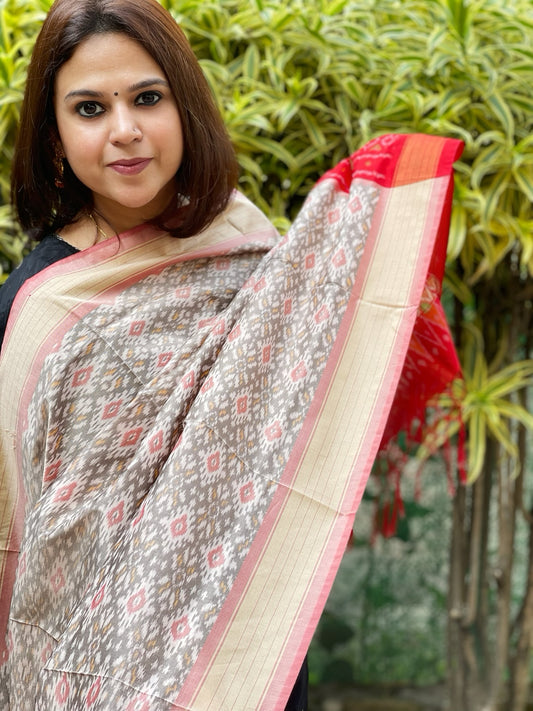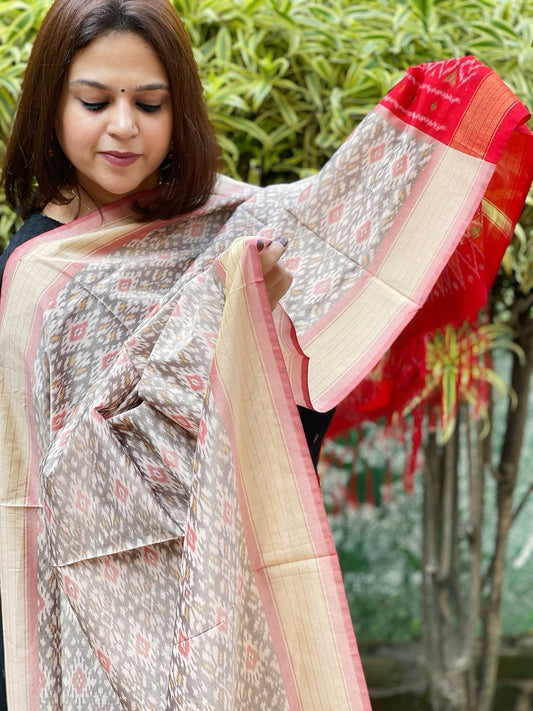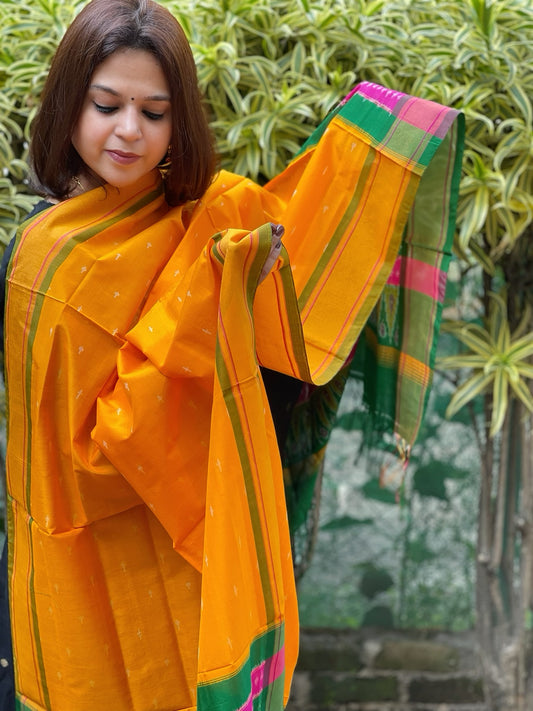From Mulberry to Muga: A Silk Lover's Guide to Uncovering India's Textile Gems
Silk has long been revered as a symbol of luxury and elegance, and for good reason. This captivating fabric not only boasts a soft, sumptuous texture but also carries a rich history and cultural significance that spans across the globe. In India, the art of silk weaving has been a cherished tradition for centuries, with each region showcasing its own unique styles and techniques.
As you delve into the world of silk, you'll discover a tapestry of enchanting varieties, each with its own distinct charm and allure. From the renowned Mulberry silk, renowned for its unparalleled softness and shine, to the delicate and sheer Chanderi silk, and the robust and golden-hued Tussar silk, the diversity of Indian silk fabrics is truly astounding.
But the wonders of silk don't end there. Venture beyond the well-known varieties, and you'll uncover a treasure trove of lesser-known silk types, each with its own unique story to tell. Explore the rugged and textured Matka silk, the captivating natural golden hues of Muga silk, and the crisp, sheer elegance of Organza silk. These hidden gems offer a glimpse into the rich tapestry of India's textile heritage, showcasing the ingenuity and artistry of its skilled weavers.
As you delve deeper into the world of silk, you'll also discover the innovative ways in which this versatile fabric is blended with other materials, creating captivating new textures and styles. From the timeless combination of cotton and silk to the intricate interplay of different silk varieties, these blended fabrics offer a world of possibilities for the fashion-forward and the style-conscious.
Mulberry Silk: The Most Popular Type
Mulberry silk is the most common and widely used type of silk. It is made from the cocoons of the Bombyx mori silkworms, which feed on mulberry leaves. This silk is known for its soft texture and brilliant shine, making it a favourite for luxury fabrics.
One of the main reasons Mulberry silk is so popular is its smoothness. The fibres are very fine and long, which gives the fabric a soft and even feel. This makes it perfect for items that touch the skin, such as blouses, scarves, and even bed sheets.
Another advantage of Mulberry silk is its strength. Despite its soft feel, it is one of the strongest natural fibres, making it durable and long-lasting. It can withstand wear and tear better than many other fabrics, adding to its appeal for everyday use and special occasions.
Mulberry silk also has excellent insulating properties. It keeps you cool in the summer and warm in the winter, making it a versatile fabric suitable for all seasons. With its softness, strength, and versatility, it remains a top choice for luxurious and comfortable garments.
Varieties of Indian Silk: A Showcase of Regional Styles
India is known for its rich tradition of silk weaving. Different regions produce different types of silk, each with unique qualities and styles. Here are some of the most popular varieties:
1. Chanderi Silk: Originating from the town of Chanderi in Madhya Pradesh, Chanderi silk is known for its lightweight and sheer texture. It often features traditional motifs like peacocks and flowers, making it perfect for elegant sarees and dupattas.
2. Tussar Silk: Also known as ‘wild silk,’ Tussar silk is produced by silkworms that feed on trees in the wild, unlike the mulberry leaves used for Mulberry silk. Tussar silk has a rich texture and natural golden colour, making it ideal for both formal and casual wear.
3. Bangalore Silk: Hailing from Karnataka, Bangalore silk is famous for its excellent quality and smooth texture. It is often used for making vibrant sarees that are worn during festive occasions and weddings.
4. Katan Silk: This is a type of silk used in weaving Banarasi sarees. Katan silk is made by twisting silk yarns into strong threads, which are then woven into beautiful and durable fabrics. Katan silk sarees are known for their intricate designs and are perfect for weddings and special events.
Each type of Indian silk brings its own flair and cultural beauty. Whether it is the lightweight feel of Chanderi or the rich texture of Tussar, these regional silks add a unique touch to any wardrobe.
Unique Silks: Lesser-Known Types
While some silks are famous, others remain hidden gems. These lesser-known silks offer unique textures and special qualities. Let's explore a few of them:
1. Matka Silk: Matka silk is made from waste Mulberry silk. It has a thick, rough texture and is very strong. This type of silk is often used for making saris and home furnishings because of its durability.
2. Muga Silk: Originating from Assam, Muga silk is known for its natural golden colour. This silk is very durable and gets shinier after every wash. It is often used in traditional Assamese garments and accessories.
3. Geecha Silk: Geecha silk is another variety with a rough texture, similar to Matka. It is made from Tussar silk waste and has a unique, rustic look, making it ideal for casual wear and artistic creations.
4. Organza Silk: Organza silk is sheer and lightweight. It has a crisp texture and is often used for overlays in dresses and evening gowns. It adds volume and elegance without being too heavy.
5. Raw Silk: Raw silk, also known as ‘pure silk,’ is unprocessed and has a nubby texture. It retains all its natural gum, making it less lustrous but more natural in appearance. It’s popular for more casual and bohemian styles.
Each of these lesser-known silks brings something special to the table. They offer different textures and looks, making them versatile options for various fashion needs.
Innovative Silk Blends: Combining Textures and Styles
Silk doesn't always have to stand alone. Some of the most exciting fabrics come from blending silk with other materials. These blends offer the softness of silk with added benefits from other fibres. Here are a few common combinations:
1. Cotton-Silk Blends:
Comfort and Luxury: Cotton-silk blends offer the comfort of cotton and the luxury of silk, making them suitable for both casual and formal wear.
Breathability: The cotton content makes the fabric more breathable, keeping you cool in warm weather while still looking elegant.
2. Combination of Silks:
Warp and Weft Variations: Some fabrics use different types of silk in the warp and weft, creating interesting textures and patterns that can't be achieved with a single type of silk.
Enhanced Strength: Combining different silks can make the fabric stronger and more durable.
These innovative blends offer more choices and versatility in fashion. They combine the best qualities of each fibre to create something truly special.
Unveiling the Unique Charms of India's Diverse Silk Fabrics
Silk is more than just a luxurious fabric; it is a piece of art with a rich history and diverse forms. From the well-known Mulberry silk to the unique textures of Matka and Muga, each type offers its own beauty and function.
Indian silks like Chanderi and Tussar showcase regional craftsmanship, bringing traditional styles into the modern wardrobe. Silk blends add another layer of versatility, combining the comfort and durability of different materials into one fabric.
Masakalee celebrates the diversity of silk by offering a wide range of dupattas, stoles, and shawls made from these exquisite fabrics. Whether you are looking for something traditional or something innovative, our collections have something for everyone.
Explore our collection today and find the perfect piece to elevate your style. Visit Masakalee now and discover the endless possibilities that our silk dupattas have to offer.


